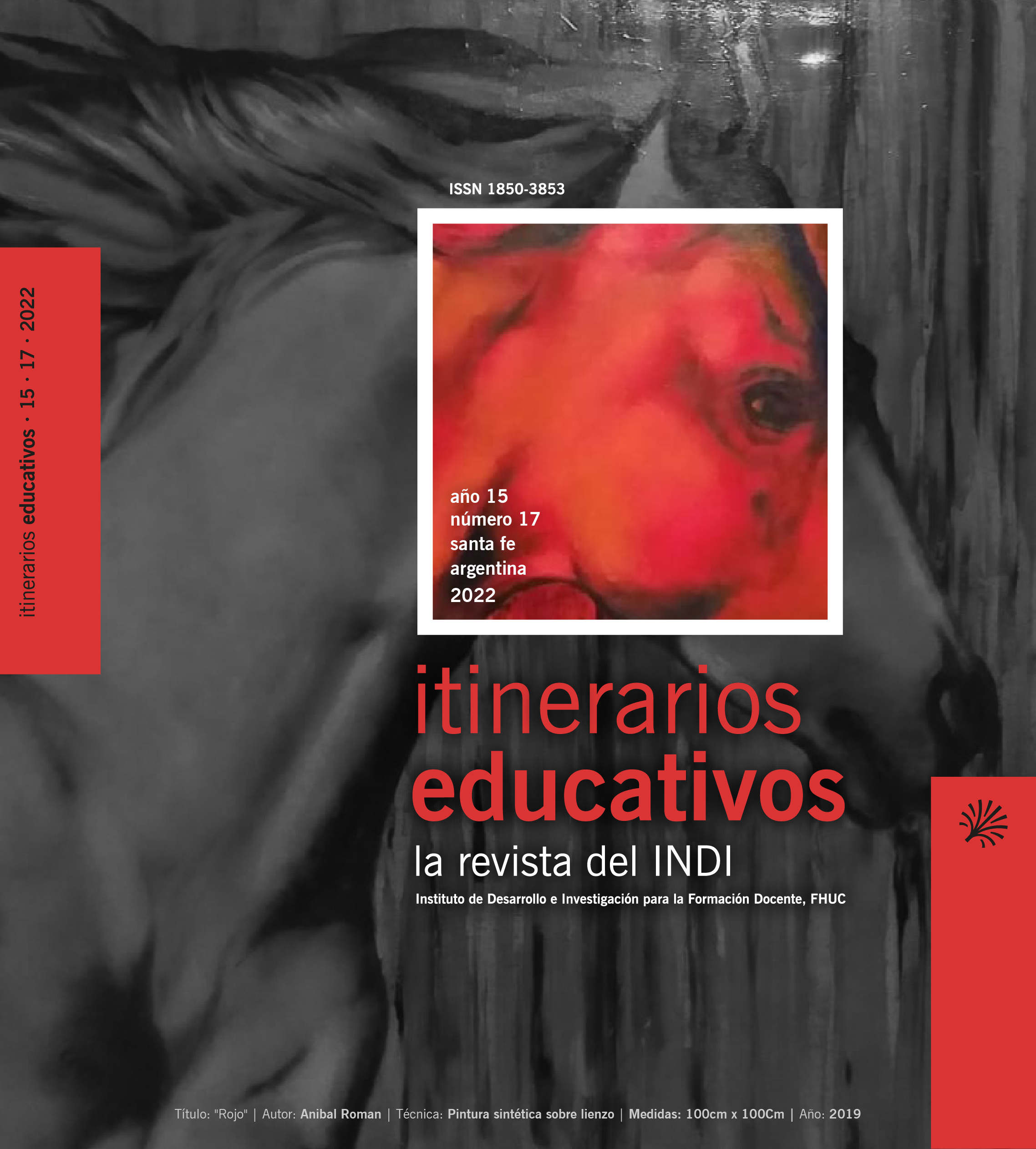Challenges for management teams in times of pandemic. Interdisciplinary work in learning communities at secondary education institutions
DOI:
https://doi.org/10.14409/ie.2022.17.e0039Keywords:
communities, learning, leadership, interdisciplineAbstract
This academic article presents an innovating and relevant pedagogical experience carried out at secondary schools in the central region of the province of Misiones, Argentina, along the lockdown caused by COVID–19 outbreak. The experience deals with a process of virtual training on Project Based Learning addressed by management teams addressed. It was intended to reorganize institutional times and spaces to reconsider schooling paths, ensure pedagogical continuity, and reflect on classroom practices and teaching, learning, and assessment processes in the context of COVID–19 pandemic. The focus was placed on developing and strengthening interdisciplinary work among institutional teams, creating new forms of schooling, generating favorable conditions for secondary level teachers’ continuous training, and meeting the demands of a 21st Century secondary school. It was also intended to create the necessary conditions to build networking skills to stimulate learning communities. The present proposal led to setting up the conditions to improve school inclusion in times of COVID–19 and in subsequent years.
References
Anijovich, R. (2017). Gestionar una escuela con aulas heterogéneas. Enseñar y aprender en la diversidad. Paidós.
Anijovich, R y Cappelletti, G. (2020). El sentido de la escuela secundaria. Aique Educación.
Bixio, C. (2020). Los proyectos de aula. Qué. Cuándo. Cómo. En Cómo Construir Proyectos en la E.G.B. Homo Sapiens Ediciones.
Campos, A. L. (2010). Neuroeducación: Uniendo las Neurociencias y la Educación en la Búsqueda del Desarrollo Humano. La educ@ción Revista Digital N.º 143, 1–14. Recuperado de: http://www.educoea.org/portal/La_Educacion_Digital/laeducacion_143/articles/neuroeducacion.pdf
Fanfani, T. E. (2021). La escuela bajo sospecha. Sociología Progresista y Crítica para Pensar la Educación para Todos. Siglo XXI Editores.
Furman, M. y Larsen, M.E. (2020). ¿Aprendizaje Basado en Proyectos: ¿cómo llevarlo a la práctica? Documento N.º 3. Proyecto Las preguntas educativas: ¿qué sabemos de educación? CIAESA.
Lewin, L. (2017). Que enseñes no significa que aprendan. Neurociencias, liderazgo docente e innovación en el Siglo XXI. Editorial Bonun.
Ministerio de Educación, Cultura, Ciencia y Tecnología de la Nación (2019). ¿Por qué enseñar con proyectos y problemas? / 1a ed. – Ciudad Autónoma de Buenos Aires: Ministerio de Educación, Cultura, Ciencia y Tecnología– Secundaria Federal 2030. Enseñar.
Ministerio de Educación, Cultura, Ciencia y Tecnología de la Nación (2019). ¿Cómo enseñar con proyectos y problemas? – 1a ed. – Ciudad Autónoma de Buenos Aires– Secundaria Federal 2030. Enseñar y aprender a través de Proyectos y problemas.
Pinto, L. (2019). Rediseñar la escuela para y con las habilidades del siglo XXI. XIV Foro Latinoamericano de Educación. Santillana CIPPEC. Recuperado de: https://fundacionsantillana.com/wpcontent/uploads/2020/04/documento–basico.pdf
Rivas, A. (2018). Cambio e innovación educativa: las cuestiones cruciales: Buenos Aires. Santillana.
Roldan, P. (2011). Laboratorio pedagógico: creando buena escuela desde la gestión. Postítulo en Conducción y Gestión Educativa. Ministerio de Educación de la Provincia de Córdoba. Subsecretaría de Promoción de Igualdad y Calidad Educativa. Recuperado de: https://www.igualdadycalidadcba.gov.ar/SIPEC–CBA/publicaciones/Postitulo/2010/TOMO%20IV.pdf
Romero, C. (2009). Claves para mejorar la escuela secundaria. Buenos Aires. Noveduc.
Published
How to Cite
Issue
Section
License
Those authors who have publications with this magazine, accept the following terms:
The authors will retain their copyright and guarantee the journal the right of first publication of their work,
which will be simultaneously subject to the Creative Commons Recognition License that allows third parties to share
the work whenever its author and first publication this magazine.
Authors may adopt other non-exclusive licensing agreements for the distribution of the published work (eg, deposit
it in an institutional telematic file or publish it in a monographic volume) whenever the initial publication in this
journal is indicated.
Authors are allowed and advised to disseminate their work through the Internet (eg, in institutional telematic files
or on their website) before and during the submission process, which can produce interesting exchanges and increase
citations of the published work. (See The effect of open access).
















